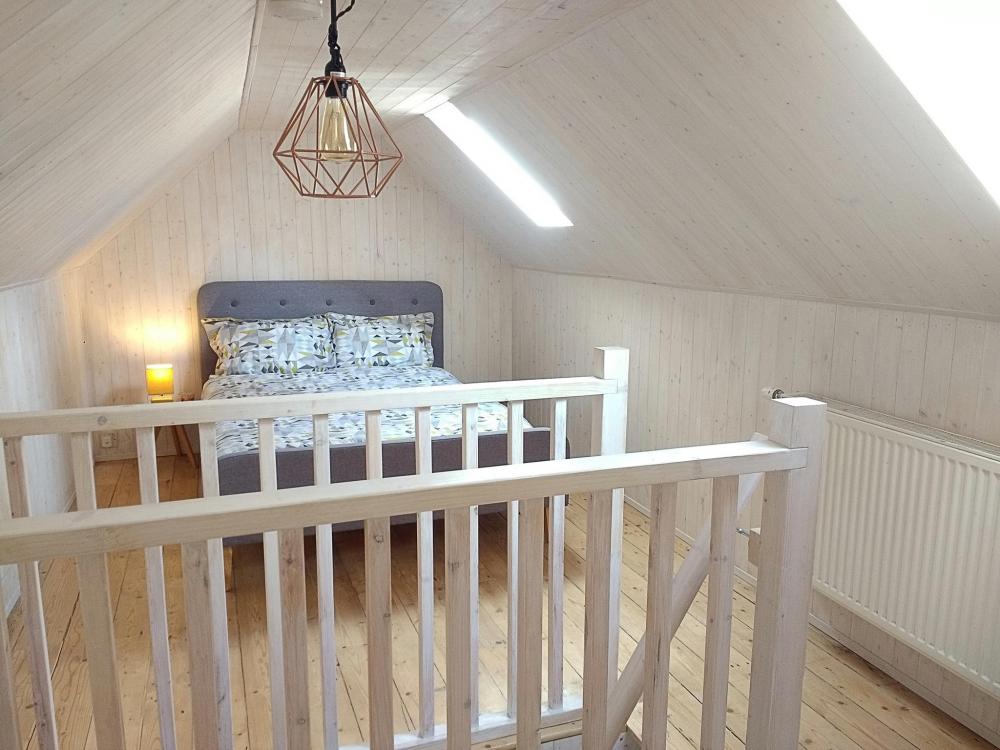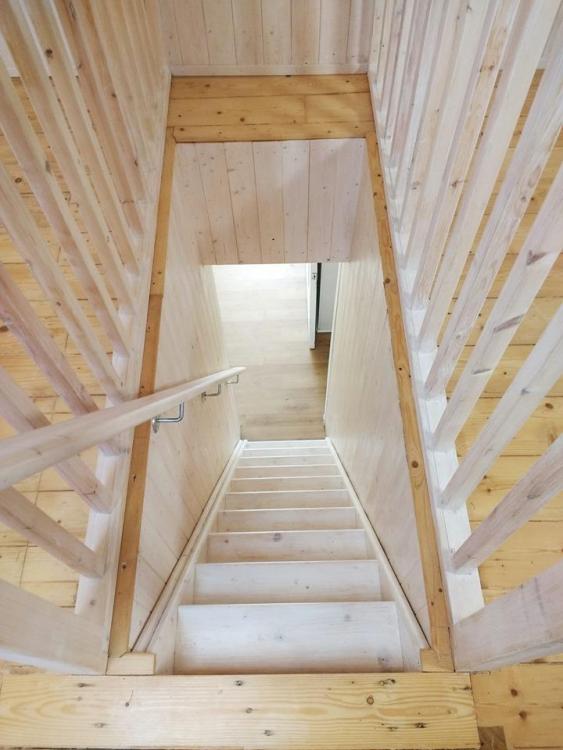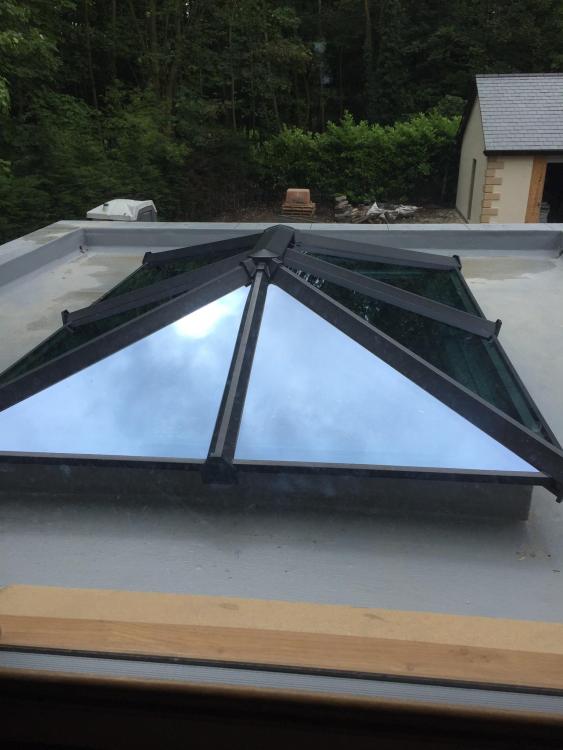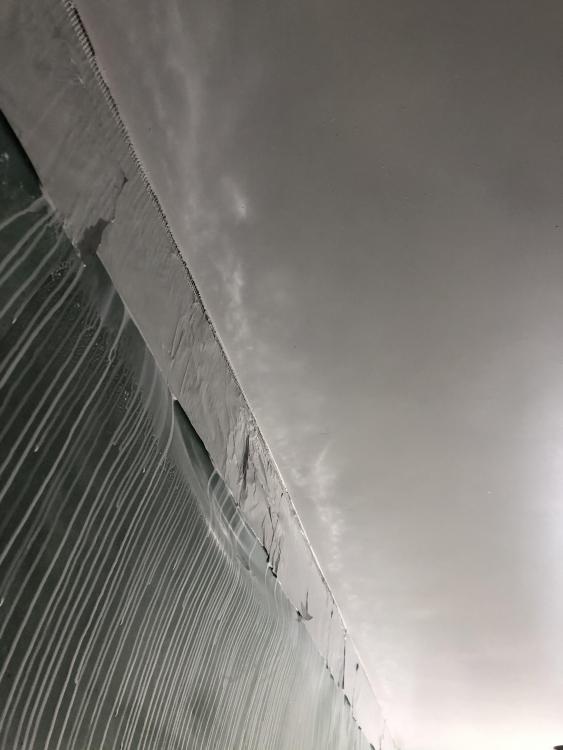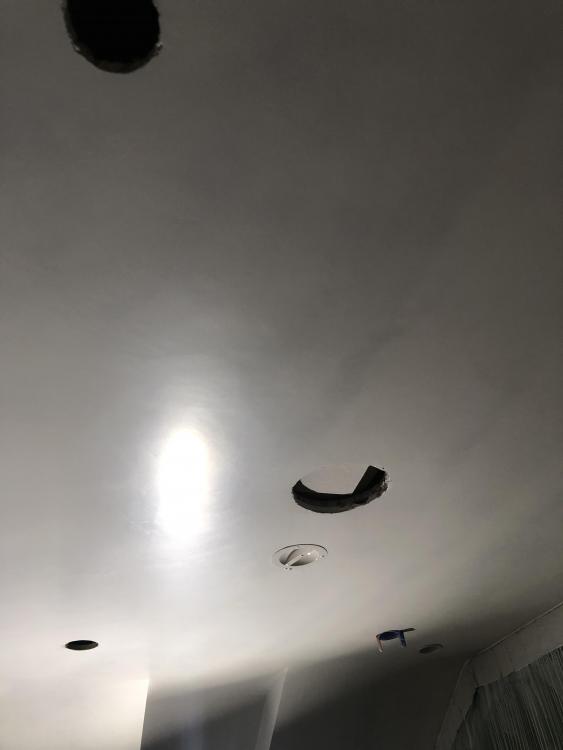Leaderboard
Popular Content
Showing content with the highest reputation on 06/30/20 in all areas
-
I have not submitted any pictures of our finished house so here are a few exteriors, with the landscaping almost finished. There is a bit of estate railing, steel edging to the drive and a bit more topsiol required. With the estate railing and the edging for the drive and flower beds we buy in the steel, my builders do the setting out and the heavy lifting and I do all the welding on site. Thanks again for all the assistance and encouragement. David5 points
-
So now the new kitchen is in, it was time to renovate the room which was the old kitchen in to the first part of the dining room (I say first part, as the second part is going to be in an extension which i'm hoping to build next year). And then the real messy work begins This is the house that keeps on giving! Found two redundant (but live) gas pipes buried in the plaster on the wall I knew nothing about, to go with the other two which have been made redundant over the years (1 for back boiler and 1 for hob). Plumber is coming this afternoon to service the boiler and put a brand new gas pipe in direct to the boiler which will get rid of all of these. There was also a really ancient plug socket which was mounted in the skirting board, I always thought it was dead, but no, its live, and part of the ring main. Well, I say ring main, it would be a ring if another cable I found was actually connected... Picked it up, could see it had some fabric tape wrapped round it, and it just fell apart in my hands. Stuck some Wago's on just to protect it, and when i turned electric back on, both sides were showing as live, so they need reconnecting at some point, but will go into a new plug socket on the back wall. Once the remaining 3 joists are out, i've got a new wall to build to support the new joists, and I also need to relocate the water meter, next to the old cupboard, which is going to be made bigger to house that, and the MVHR unit. The old joists were very bad as predicted, and full of flight holes from the dreaded woodworm, so another room ridded, and I've fully vacuumed under the floor as thoroughly as I could. New joists have come without treatment (despite me paying for treated wood!! Builders merchant won't reply to me since querying it!) so I've bought some treatment which I will paint on before putting the insulation in. Hoping to have the floor down by end of next weekend, just praying that the main stop tap at the end of the driveway will move, it has been moved by Yorkshire water in the last 10 years so I have hope. Won't be able to completely finish the floor til Yorkshire Water have been to inspect the meter, which hopefully won't take too long.2 points
-
Thanks to everyone who helped me with this. It has been a while now but I forgot to come back and post photos of how it turned out. In the end I used CLS and for the top and bottom rails and routered out a channel in these to fit the spacer moulding I had found. The newel posts were just a big chunk of timber from a diy shed (67x72mm I think). The spindles were £40 from eBay. The CLS and newels were about £17 I think and the spacer moulding about £16. It was all pretty stable in the end and passed the survey no trouble.2 points
-
It is usually possible to convert the central heating circuit to a sealed system with an expansion vessel, though it is not unusual to find a few unknown leaks when you do this. To get rid of the hot water header tank needs an unvented cylinder, again with the correct pressure reducing valves, expansion vessel and safety blow off valves and their drain.2 points
-
I’m sure it will be well known but this chap has a handy commentary on planning matters. http://planninglawblog.blogspot.com/2 points
-
Write to three lawyers; describe the problem succucintly, and ask each of them for a fee proposal.2 points
-
Hello all. Rafts. To quote Peter W “EPS isn’t fully waterproof as there are potentially thin capillary gaps between the EPS blocks. Not unusual to see radon or other thick barriers added as BCOs “expect” to see them” I’m just getting the hang of this so not sure on the etiquette; how to quote others etc, compliment , reference others, length of response and so on. Any guidance will be much appreciated. Peter - Good point. To compliment you points (please feel free to add or question, again not yet sure of etiquette). DPM - It’s not just a bit of plastic and should it be more appreciated? The DPM on top of the insulation stops any concrete directly laid on top of the insulation from bleeding water/ the fine content of the concrete down into the gaps or forcing the insulation apart and potentially creating thermal bridges. Your concrete (assuming ready mix rather than hand batched) is mixed assuming a certain amount of water content, so maybe you don’t want to lose it into the gaps as it can make not least hard to float / polish off, especially on a hot day and when you have run out of steam after a hard day. The water is also required for the curing process as the batching plant measure this very carefully. Don’t be tempted to add water to a ready mix concrete, your won’t need to if you plan and you prepare for the pour. That includes food, coffee etc, leave the Sherry / Buckfast tonic wine (choose your region / tipple) for later when you have finished and cleaned up. Concrete slab design is still very much an art, although there has been some progress in terms of analysis, but we are talking about domestic projects here. In that vein one of the keys is to control cracking in the slab as it cures and then dries out. You don’t want to lose your wallet / money container into the cracks. What you often look to do is to allow the slab to shrink and you then dictate (with a fair wind) where you want this movement to take place. The DPM acts as a slip membrane so when the slab shrinks it slides on the plastic. If you have gaps the DPM sinks into these and starts creating keys which grip the slab, a bit cautious to be honest but more importantly if you have a badly prepared substrate this can lead to problems. Take your time and prepare well what is going under the slab / insulation. If your sub base (type one etc) is all wavy (flatness) and not level (there is a difference between flatness and level funnily... for another day, but worth finding out a bit more about so that you don’t have an issue with your flooring etc later) then you are inviting problems. Essentially if you have not prepared the surface the slab sits on properly then slab starts to “get a grip of the ground” and this causes unwelcome stresses which exacerbate the cracking, if your substrate is too high then your slab will be too thin in places and this too will cause problems. Take your time. Last but not least the DPM can be designed to work in both directions. The one we think about most is to stop water coming up from the ground. It can also work the other way. Very broadly speaking (comments welcome ) on a hot day the house gets warm, you do some cooking say and the moisture content in the air rises further. We know water vapour condenses on cold surfaces. You have a nice cool slab so it starts to attract moisture. It may start to raise the moisture content in the slab. Fine it will dry out but you don’t want it to go further and start forming puddles under the insulation. That is one good reason for considering putting the DPM on top of the insulation and under the concrete as it work in reverse as a vapour barrier. Next time you buy a roll of DPM and maybe feel and you paid a tenner too much look at what it may be doing for you. Perhaps there is a free lunch after all! The dreaded raft foundation? Again to quote (sorry) Peter W “A raft is normally a thickened edge with steel etc that is designed to work as a stressed member. An insulated slab is just that - a slab of concrete with mesh in it and pretty much that’s it.” Good summary. To expand a bit, some food for thought and a bit of background. Start with a light domestic strip foundation. This is usually a strip of concrete laid in the ground with some light steel mesh in it. The mesh is really intended to control cracking rather that to turn the strip of concrete into a reinforced concrete beam which is a different animal. You may see this type of light crack control mesh mentioned as an A142 sometimes A193 mesh. Often the house walls will sit over the centre of the strip foundations unless there is a significant mismatch between the load on the outer and inner leaf. Remember we are dealing with domestic projects here so perhaps look at the practical and buildability side of things to suit your circumstances. All other things being equal the pressure the strip found puts on the ground is fairly even. If you locate the wall at the edge of a strip foundation then it puts more weight on one side This can cause the foundation to overstress the soil (formation) on one side and the foundation can start to rotate/ twist (settle on one side!) more than you want. There are lots of ways of designing a raft /basement structure but in the spirit of things I’ll continue with one option. You can have what (depending on where you live ect) is called an edge thickened raft as Peter describes. One way of making this work (broadly) is to put heavier (more than that usually required for simple crack control) steel reinforcement in the top of the slab all the way to the edge. The edge of the slab is thicker (thickened edge) and can if need be designed to act as a beam if you have concentrated loads say each side of a big set of bifold doors or under a column. The steel in the top of the slab stops the foundation rotating but often it needs to be heavier (thicker bars) than that required just for the crack control. But how? The detailed explanation is very lengthy and best left for now. Essentially you decouple the two forces – the downward load is resisted by the soil under the thickened edge (just the same as a strip foundation) and you use the slab and it's top steel to stop the foundation from rotating. Essentially this part of the slab works a bit like a cantilever beam, like a balcony on a building (being very simplistic). Often you can use the same techniques when designing a basement. Real life and rafts? If you’re a self builder, extending or just doing some stuff then is there not merit in keeping it simple, easily buildable and approaching the structural type work pragmatically? Discussions can revolve around a few millimetres of slab thickness (an inch or two) , quantity of rebar and so on as that is something that is more easily quantifiable an easy to price when you are doing it yourself. You can nail the material costs to a good extent but the labour costs are more flexible. Thinner more heavily reinforced slabs are harder to do (conjested reinforcement etc) and pour and compact properly hence the labour cost goes up if you want the same quality of workmanship? What about the unknowns such as variable ground conditions that Peter mentions? Is it worth while starting with the “simple stupid” but proven to work type of design and work up from there? You reduce the risk perhaps and that allows you to spend money on the exciting things like heat recovery systems, kitchens and the things that float your boat? After all once it's all finished you don't see the "structural" design" unless it's a feature of the build. One pragmatic solution to rafts whether you are self building or extending etc is to look at the worst layer of ground, below the hard core, look at the thickness and depth of this layer and decide if you want to design for that. The zone of pressure that a raft type foundation imposes on the ground often goes much deeper (well beyond the standard 150mm hard core layer) than a strip foundation anyway. If you have a simple design you will probably get more realistic quotes. More builders will have the capability to take on the job as they will be in their comfort zone. Perhaps you will feel better able to manage your project. Maybe it’s worth maybe sacrificing a bit of extra concrete here and there? How common is it for a builder to look at a set of drawings and think.. that looks hard so I’ll bung on 50 – 100 % and if I get the job then I’ll then work out how to do it as I’ll be well covered anyway? In the interests of fairness that last comment was slanted. There are lots of very experienced builders about who have spent many years learning their craft and will give good sound advice on the dreaded rafts and point out that while the material cost may be a bit more the reduction in labour cost for the" simple stupid" will more than offset the material savings.2 points
-
https://www.homebuilding.co.uk/amp/news/permitted-development-new-rights-update-to-come-into-effect-on-1-august New Permitted Development rights allowing two-storey upwards extensions to blocks of flats will come into force on 1 August, the government has announced. It has been expected for several months that this change to Permitted Development rights will be allocated first to purpose-built blocks of flats, before eventually being rolled out to all detached properties. In March, housing secretary Robert Jenrick said in the Ministry of Housing Communities and Local Government’s ‘Planning for the Future’ document: “We will introduce new permitted development rights for building upwards on existing buildings by summer 2020, including to extend residential blocks by up to two storeys and to deliver new and bigger homes.”1 point
-
pv on the jetty --30acres --could be good --but again its the outlay 3oacres =3mw so i am told -but with the pitful FIT you need to find customers to sell it to at 10p a unit -then its a real winner--again I had companies willing to do that if there were users close at hand -then they pay me rental --about 25k a year and they build it I,m too old for all that sort of messing about1 point
-
As a roofer I completed a GRP course, one day and about £90. Was brilliant and you can then attain a warranty on the installed roof, its not hard, but there are a few tricks of the trade. The course I did was through Sentinel, you can even view their manual online which is very useful https://www.sentinelgrp.co.uk/assets/sentinela5installationguide2018.pdf As said before, keep your boards dry and make sure you get your resin mix right, if you are struggling with the weather then roll out a thin coat of resin over the boards as soon as they are down as this will stop them from getting properly wet. Even if it rains they are easily dried. One thing to mention...don't use ply the resin doesn't properly bond to it and will eventually delaminate. Only OSB should be used under GRP roofs. If you have any questions I will try and help out.1 point
-
Fill it but use proper dry lining joint filler, not something from a tube.1 point
-
A QS will be able to decompose the build into 'things', your builder and PM, if you get one, should help you understand which things are commodities (glue, sand etc) and which have a cost/quality/timing tradeoff or are a visible aesthetic and you want to choose them yourself. However, the question always remains, how do you ever know that the price a PM or builder gives you for anything is really the 'best price' or even the best option? Answer is you don't unless you do the research yourself. However that in itself can be a tradeoff - how long do you spend searching for a better deal? When is good enough, good enough. Many of us have been surprised that for many items, the local builders merchant is way more expensive than other purchasing options, yet they are full of builders all day long. Why? Those builders care much less about the 'best price' (as their client will ultimately foot the bill) and what they are most worried about is payment terms to help them manage their cashflow. You just need to get your expectations straight : for your contractors and professionals, this is a job - it will get done (hopefully well) and then the next job will come along and so on. They will not have to live in it. If you care deeply, get involved as much as you can. If you don't (and that's not a criticism) just let them get on with it.1 point
-
Cheers for the tip @joe90 , that could save a lot of headaches!1 point
-
1 point
-
Yes you can use a double tee as it is seen as a swept connection however I would try and get the basin to wash down the branch from past the WC if possible. The bath is a bigger issue, you can use the bottom boss but I would make sure there is a good flow from the bath to it and no restricted pipework1 point
-
Hi Paris22, You have said repeatedly in a number of posts that you are confused and it appears from Ferdinand's post that many of us are too! As he suggests in the part I've quoted, I was indeed under the impression that you've been refused Planning Permission (PP). Perhaps you can clarify the following for all concerned so that we're we're all on the same page and not just the same thread . . . Firstly, have you received anything in writing from the local authority that indicates that PP has been refused - or would be refused - if applied for? If so, having sight of exactly what they've told you would be helpful. Secondly, can you give more detail about what your plans are. So, for example, you say in your opening post that the extension is 6m x 3.7m. Depending upon which way around this is, i.e. is the extension 6m out from the rear of the house or just 3.7m - will impact the likelihood of whether or not the scheme falls within permitted development. The latter probably would (note emphasis), while the former probably wouldn't. Other details such as whether or not you're in a conservation area or Area of Outstanding Natural Beauty (AONB) would be helpful. I've asked my wife to read the thread again as she's not a forum member and not seen all the replies. Her response was emphatic; you really, really need to establish what you can build under permitted development and then come up with a scheme that conforms to that. At that point you can apply to the council for a Certificate of Lawfulness which is official confirmation that PP is not required. Once obtained, your neighbour has no input, no involvement and cannot object. Here's link - again to the Planning Portal - that covers this in detail: Lawful Development Certificates. Tim.1 point
-
1 point
-
I have some Ideal Combi windows. The sound attenuation seems very good. I think the glass does most of the job. Triple glazed.1 point
-
Ok so I believe this is in the Business and Planning Bill. It has lots of different measures in it from longer construction hours to extending driving licenses and cafe use of pavements and street closures.. https://publications.parliament.uk/pa/bills/cbill/58-01/0148/200148.pdf It has NOT yet received Royal Assent but is heading to the Lords. Status here.. https://services.parliament.uk/bills/2019-21/businessandplanning.html If you have already filed to extend then they should take this into account when deciding your application. You might want to continue with it as that would give you three years not just next April. I wouldn't withdraw it too hastily in case the bill fails.1 point
-
1 point
-
I am applying for a consent this week where the LA are due to introduce CIL October 5th. Does anyone have Robert Jenrick's mobile as I may need to give him a bell in case the LA look like they will not decide in time?1 point
-
(expletive deleted) me ! Though ! I’m still tidying up ! I had a bucket of painty water with the filter in soaking . Forgot about it and tipped the lot straight down the man hole ????1 point
-
1 point
-
@Thorfun I am really happy with my doors & windows from ideal combi. Been in for 2 1/2 years now. Not had any problems. They look great. The large sliders work really well. I just hoover the track to get rid of any dust & leaves every few months. The locks & handles re really robust. Front & back doors also great. A self builder friend has Internorm & there is no noticeable difference in quality in my opinion. I had ridiculous quotes from Internorm. Velfac are very similar to ideal combi. I managed to knock them down on price considerably by playing them off against the quote from Velfac.1 point
-
see http://www.1moreroom.co.uk/architects-southampton-news/2015/12/30/the-45-degree-rule-sunlight-daylight-and-your-proposed-extension scroll down, 45’ rule does not apply to permitted development!!!!! You have been rejected because you applied for planning permission. i have had quite a few fights with planners when a builder and won every time because I did my homework first. Crack on ?. also found this on a planning law site. ..Right to light is also an easement and is a civil infringement and has nothing to do with the council. Councils perform daylight assessments which is something totally different to the right to light and daylight assessments can only come into play if planning permission is required. As this build is under PD rights forget about why planning was refused as it has no bearing on your right to light. ?1 point
-
What you could do is... Offer to sell it to them for a nominal £1 inc costs subject to contract. Get an acceptance in writing and then back out. Any claim to adverse possession would then fail because the agreement to purchase would amount to them admitting you own it. ...but they would never speak to you again!1 point
-
Things seem to be happening very quickly and progress has gone really well. The block and beam of the huge extension is coming together now and the focus has been outside, although with the occasional downpour the inside is now half empty with our 1970s bathroom suite finally gone. In the interim I've sold everything inside, the kitchen, boiler, naff internal doors and even the crappy floor tiles we took off. All copper and rads ready for my dad to weigh in. Have now run out of stuff to sell! Here are a couple of pics from this week. The final pic, the bank you can see and the path runs 90 metres from the entrance to the end of our garden from one old railway bridge to the other old railway bridge the other end which is over the canal. The railway at the top of the embankment is no more. It was the line that ran from Whitchurch to Chester and we can clamber up to the top of the embankment which is now an overgrown mess of bramble and ivy, no track any longer. We cleared some of the ivy and when we were clearing the garden of shrubs, bulbs and plants that we knew would get disturbed I literally moved every one by hand and planted it on the bank and we have been lucky that the majority of the plants have taken and had daffs, bluebells and lots of other things flower so it looks quite nice, even the foxgloves that seem to have gone crazy. We do need to sort out some sort of wall or something to replace the rockery' bit which was already there. I dread to think of the cost for such a long length. It's not as high in some places and levels off.1 point
-
The following all comes with the caveat of "Coronavirus time" i.e. it could normally be shorter ? First inquiry was back in Jan 2019 (for budgeting purposes only, no application made). BTW - their estimate was a little higher than the actual ... First application contact mid-Mar 2020 (what timing!), and I received a quote towards end of Mar/early April via snailmail. I accepted quote in mid May 2020, with the caveat on completion being dependent on my ability to visit site to complete trenching, cabinet for meter box etc.. WPD are doing me a favour by bringing the meter box and other items to the site (normally you have to collect these from one of their depots). As things eased, I took a punt on agreeing completion of installation in w/c 20 July which is happening. FYI - for our connection, a network upgrade is required (uprated transformer somewhere up the line), and we are having to have an underground feed to next door re-routed as well as our supply connected.1 point
-
1 point
-
Only the minimum possible. You wouldn’t want to bury the uprights as it would compromise the concrete strength and thickness and you’d end up with lots of disconnected core segments. Whats the issue with doing it properly and using a wall plate and then cladding the outside of the stub walls ..? Would be easier and less to go wrong.1 point
-
The price of the raw material is not the only cost to take into account; the biggest annoyance (on our build) was the cost of mishandling the blocks. In other words - the couldn't-give-a-stuff-itis It matters if other blocks are used as a cutting surface , so when the builder uses those blocks there are so many cuts on it that the block bursts. It matters if there is only one supplier: we used more than we thought we would, and instead of just popping down to the BM, you have to arrange a palletised delivery. Despite being repeatedly asked, our builder seemed to take delight it tell us we needed more blocks five minutes before they disappeared off site. It matters if the blocks are laid without care and subsequently, instead of relaying, bashed into place with a piece of 3 by 2 - and so fractured, causing the inevitable burst. Ask about delivery lead time. Its getting longer..... On balance, those carelessnesses added nearly 5% to the raw price. By the way, just been to a local Durisol build. An appreciable number of (as yet unused) blocks were 5mm more 'out' . QA, it seems is becoming an issue. They should not have left the factory.1 point
-
Have we not been warned about this sort of talk, wives and daughters read this.0 points
-
0 points
-
0 points
-
0 points
-
I'm sure there's a video in the 10 Minute Workshop series where he was experimenting with paint sprayers and came out looking like Frosty the Snowman ... SWMBO can make a model of "Painting Pocster" for the Christmas Cake.0 points
-
@Thorfun want to buy a sprayer ?? Jesus ! The mess !! Firstly the paint I choose was surprisingly thin so I added a bit of water as new plaster . Mixed mechanically for 10 mins . What came out of the sprayer was more water than paint . Anyway plaster got a water coat .... Added more paint and mixed .Proper coating now . Some observations though I blocked some of my ceiling holes with projecting bits to hold circle in place . Bad idea as it caused the spray to pattern as it hit them . Removed them . Edges seem to be an issue as paint splatters off walls and onto the ceiling . You can see the edges have a ‘dimple’ effect . Hope that dries out . i then ran out of paint before even getting to the ensuite . The main finish looks good . If anything it shows up plasterers imperfections !! But the mess ! I mean on me not the bloody machine !!! I’ll take advice on the edges . Might 2nd coat it when dry ( and have more paint ) Photos of fun Actually it might be the silver foil I used playing tricks with my eyes . Even though it’s painted out I think it’s still reflecting . Have to admit that was not enjoyable ! 5 hours of cleaning now !! Ffs0 points
This leaderboard is set to London/GMT+01:00


